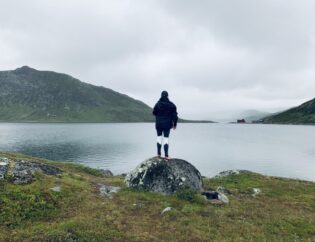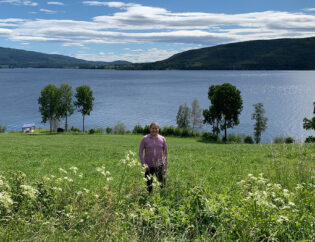
Grounded – More Than a Concept
For those working in nature therapy—or feeling a deep call toward it—being grounded is not just a personal practice. It’s a fundamental pillar of the entire approach. In the meeting between human and nature, something deeply healing takes place, and the connection to the earth becomes one of the most powerful channels for balance, regulation, and restoration—for both the client and the therapist.
Being grounded means being physically, mentally, and emotionally present. It’s the ability to stay connected to the body and to the moment—while remaining steady even when things become turbulent. In nature therapy, this becomes especially clear. When clients are given the chance to feel their bodies in contact with the earth, presence stops being an abstract idea—it becomes a direct, sensory experience.
Nature’s Role in the Grounding Process
The earth is not just a physical surface—it’s a living organism we are deeply connected to. When we walk barefoot on the ground, lean against a tree, or let our hands sink into the soil, the body’s natural ability to self-regulate is activated. The stress response eases, the nervous system settles, and we attune to a deeper rhythm within ourselves.
For many clients—especially those who live far from nature in their everyday lives—this kind of contact can be both unfamiliar and deeply familiar at the same time. As a nature therapist, you have the opportunity to facilitate moments where the connection between person and earth is restored. It’s in these moments that much of the deep, wordless healing occurs.
The Grounded Therapist
It’s difficult to guide someone into an experience you’re not rooted in yourself. That’s why it’s essential for you, as a therapist, to engage in your own grounding practice—not as a duty, but as a natural part of your own nervous system regulation and professional presence.
When you are grounded yourself, you create a safe and steady container for the client’s emotional processes. You can hold space with calm clarity, without being pulled into the client’s emotional turbulence. This allows you to stay open and empathetic, while remaining anchored in yourself.
A Grounding Exercise
Here’s a simple but effective grounding practice you can use both for yourself and with clients:
Exercise: Ground Contact in Stillness
Duration: 10–15 minutes
Setting: A calm, safe outdoor area—grass, soil, or forest floor.
- Stand barefoot with your feet firmly planted on the ground. Feel the surface—its temperature, texture, and moisture.
- Close your eyes. Turn your attention inward and simply notice how your body feels right now—without judgment or analysis.
- Imagine roots growing from the soles of your feet, reaching down into the earth. Visualize these roots spreading and diving deeper and deeper, anchoring into the earth’s quiet stability.
- Breathe slowly. With every exhale, release tension, thoughts, and stress into the ground. With every inhale, draw up nourishment, strength, and support from the earth.
- When you feel ready, gently open your eyes and notice how your body feels now. What has shifted?
This exercise can be done alone, in silence, or as part of a therapeutic session—with time afterward for reflection or conversation. It also works well as a transition ritual before or after nature-based sessions.
Grounded Practice in a Modern World
In our high-tech and often disconnected world, reconnecting with the earth has never been more important. Nature therapists play a vital role in guiding people back to what is natural, real, and meaningful. The practice of grounding becomes a central anchor—not just a tool, but a way of being.
To be grounded is not a box to check off—it’s a living, ongoing relationship. In the daily meeting with the earth, with the weather, and with your own body, you cultivate the inner security and outer capacity needed to hold space for others. And it’s here—with your feet on the ground and your heart open to the living world—that true nature therapy begins.









